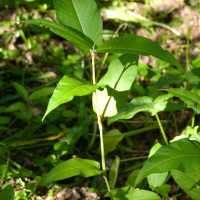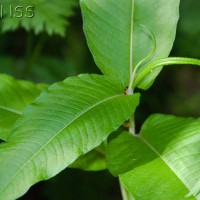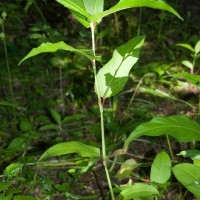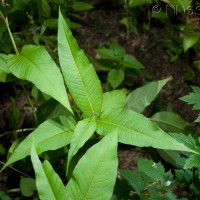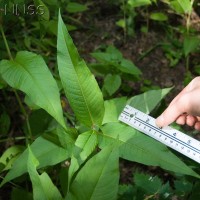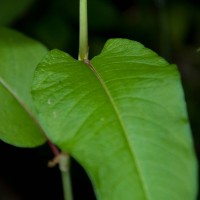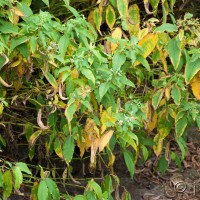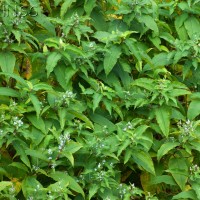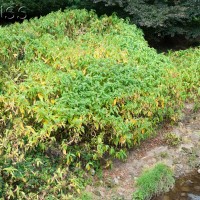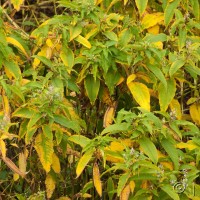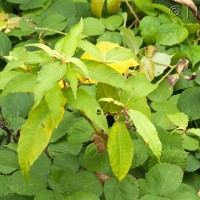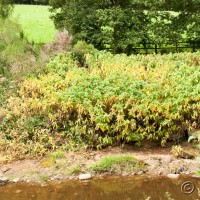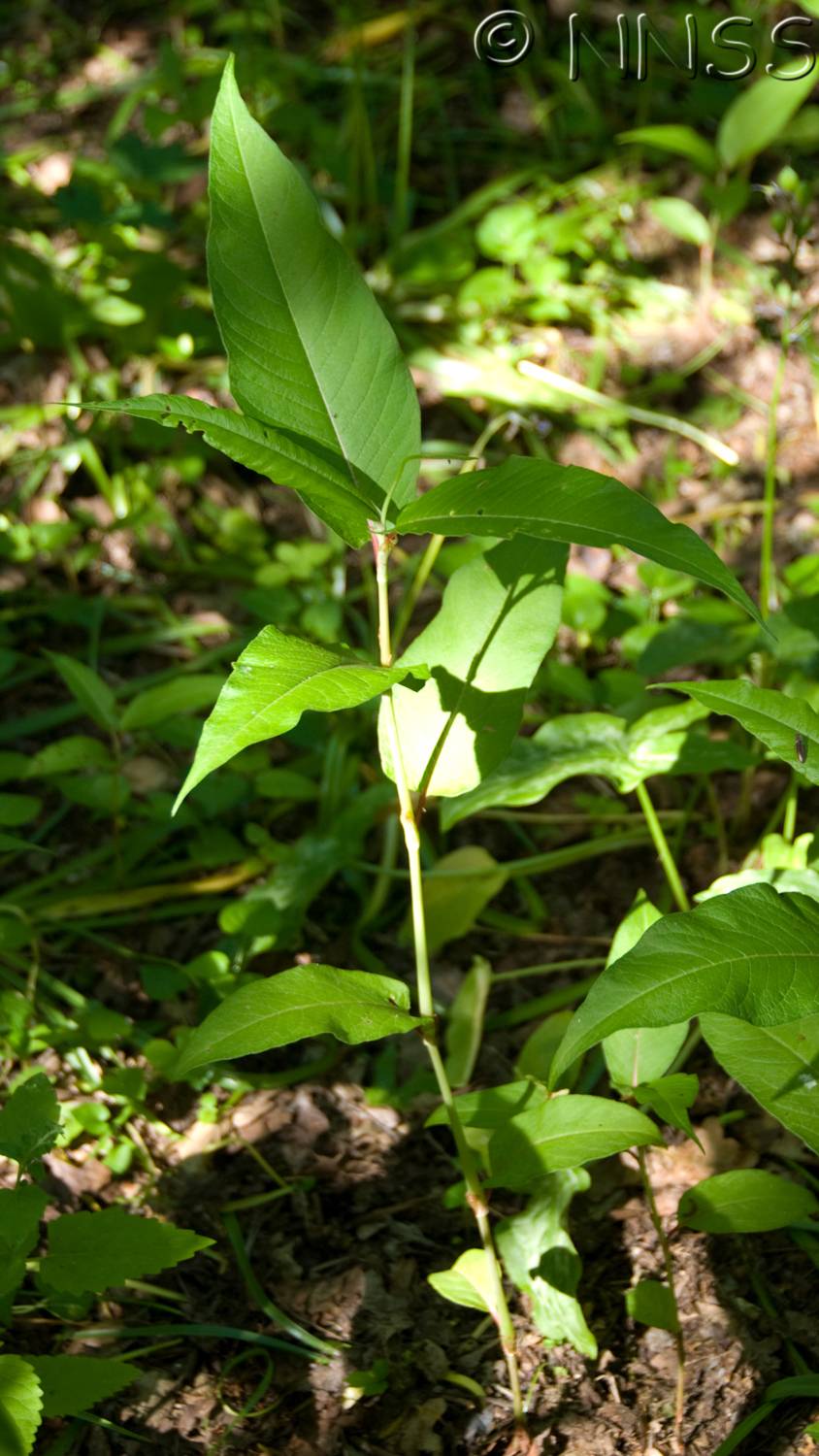
Himalayan Knotweed - Persicaria wallichii
Expand and collapse the sections below by clicking on the title or + / - icons.
Short description of Persicaria wallichii, Himalayan Knotweed
A robust rhizomatous perennial to 1.8m, with pinkish or white flowers. The leaves are lanceolate, up to 20cm long, and with sheaths surrounding the stem at the base of their stalks as in other knotweeds.
Impact summary: Persicaria wallichii, Himalayan Knotweed
It is capable of colonising roadsides and riverbanks to the detriment of the native flora.
Habitat summary: Persicaria wallichii, Himalayan Knotweed
Damp grassland and streamsides.
Overview table
| Environment | Terrestrial |
|---|---|
| Species status | Non-Native |
| Native range | Himalayas |
| Functional type | Land plant |
| Status in England | Non-Native |
| Status in Scotland | Non-Native |
| Status in Wales | Non-Native |
| Location of first record | v.c.54 |
| Date of first record | 1917 |
Origin
Native to the Himalayas.
First Record
In cultivation in GB by 1900. First recorded in the wild 1917 in North Devon.
Pathway and Method
Introduced as an ornamental garden plant. Very persistent in abandoned gardens and on roadsides, etc. where garden waste has been dumped. The plant is still available from some suppliers.
Species Status
Locally naturalised, especially in north and west GB. Although it was recorded in 374 10km squares between 1987 and 1999 as compared with 205 from 1970 to 1986, it is not clear whether its range is expanding, because of differences in recording practice. In all date classes it has been recorded in 608 10km squares up to 2010.
Dispersal Mechanisms
Plant fragments moved by cutting machinery or flowing water; deliberate dumping of garden waste.
Reproduction
Himalayan Knotweed has bisexual insect-pollinated flowers, but apparently rarely sets seed in GB. Reproduction is almost entirely vegetative, from fragments of rhizome, or pieces of aerial stem containing nodes.
Known Predators/Herbivores
None known.
Resistant Stages
Overwinters as rhizomes after the aerial stems have died back.
Habitat Occupied in GB
Rough grassland, including railway banks, roadside verges and streamsides.
Scattered records throughout lowland GB, but with most records concentrated in the southwest and west Wales.
Environmental Impact
Forms very dense spreading stands that exclude other vegetation.
Health and Social Impact
None known.
Economic Impact
Slight at present, but it could become costly to control if there is significant spread from its established sites.
Identification
Stace, C.A. (2010) New flora of the British Isles, Third Edition, Cambridge University Press, Cambridge.
Biology, ecology, spread, vectors
Botanical Society of the British Isles. Vascular Plant Atlas Update Project http://www.bsbimaps.org.uk/atlas/ [March 2011].
Conolly, A.P. (1977) The distribution and history in the British Isles of some alien species of Polygonum and Reynoutria. Watsonia, 11, 291-311.
Management and impact
Child, L. & Wade, M. (2000) The Japanese Knotweed Manual. Chichester: Packard.
General
Ecological Flora of the British Isles http://www.ecoflora.co.uk/search_species2.php?plant_no=470020360 [March 2011].
Lousley, J.E. & Kent, D.H. (1981) Docks and Knotweeds of the British Isles. Botanical Society of the British Isles, London.
https://www.cabi.org/isc/datasheet/120210
https://secure.fera.defra.gov.uk/nonnativespecies/downloadDocument.cfm?id=1413
Spotted this species?
Distribution map
View the Distribution map for Himalayan Knotweed, Persicaria wallichii from NBN Atlas

Native range map
View an interactive native range map for Himalayan Knotweed, Persicaria wallichii
Risk assessment
Risk assessment for Persicaria wallichii. See a full list of non-native species Risk assessments.

